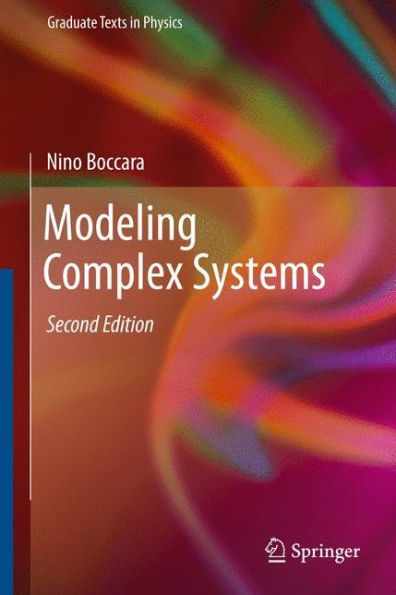The essential points of this first chapter are • The definition of a complex system • The notion of emergence • The definition of a model • The notion of dynamical system This book is about the dynamics of complex systems. Roughly speaking, a system is a collection of interacting elements making up a whole such as, for instance, a mechanical clock. While many systems may be quite complicated, they are not necessarily considered to be complex. Today, most authors agree on the essential properties a system has to possess to be called complex. The first section is devoted to the description of these properties. To interpret the time evolution of a system, scientists build up models, which are simplified mathematical representations of the system. The exact purpose of a model and what its essential features should be is explained in the second section. The mathematical models that will be discussed in this book are dynami- 1 calsystems. A dynamical system is essentially a set of equations whose- lutiondescribesthe evolution,asafunction oftime, of the state of the system. There exist different types of dynamical systems. Some of them are defined in the third section. 1 There is an extensive literature on mathematical modeling. The reader may, for example, consult [11,88,163,233].
1100291263
Modeling Complex Systems
The essential points of this first chapter are • The definition of a complex system • The notion of emergence • The definition of a model • The notion of dynamical system This book is about the dynamics of complex systems. Roughly speaking, a system is a collection of interacting elements making up a whole such as, for instance, a mechanical clock. While many systems may be quite complicated, they are not necessarily considered to be complex. Today, most authors agree on the essential properties a system has to possess to be called complex. The first section is devoted to the description of these properties. To interpret the time evolution of a system, scientists build up models, which are simplified mathematical representations of the system. The exact purpose of a model and what its essential features should be is explained in the second section. The mathematical models that will be discussed in this book are dynami- 1 calsystems. A dynamical system is essentially a set of equations whose- lutiondescribesthe evolution,asafunction oftime, of the state of the system. There exist different types of dynamical systems. Some of them are defined in the third section. 1 There is an extensive literature on mathematical modeling. The reader may, for example, consult [11,88,163,233].
69.99
In Stock
5
1

Modeling Complex Systems
490
Modeling Complex Systems
490Paperback(Softcover reprint of hardcover 2nd ed. 2010)
$69.99
69.99
In Stock

Product Details
| ISBN-13: | 9781461426813 |
|---|---|
| Publisher: | Springer New York |
| Publication date: | 11/05/2012 |
| Series: | Graduate Texts in Physics |
| Edition description: | Softcover reprint of hardcover 2nd ed. 2010 |
| Pages: | 490 |
| Product dimensions: | 6.10(w) x 9.25(h) x 0.04(d) |
About the Author
From the B&N Reads Blog
